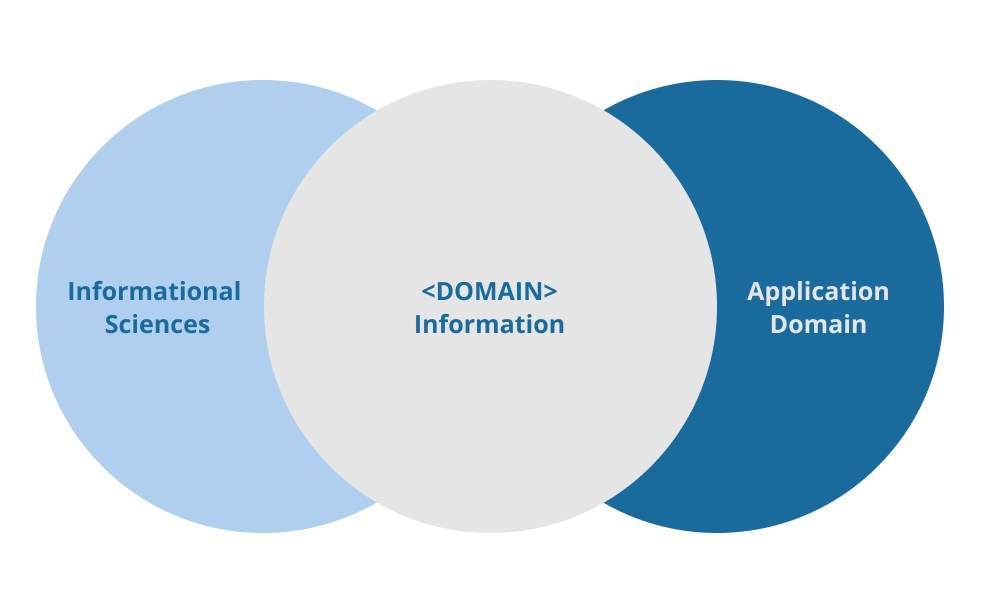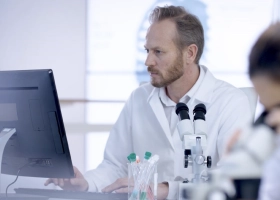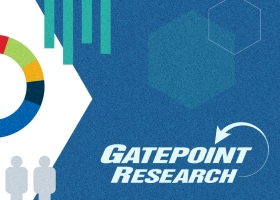What Is Informatics?
Informatics is the study, design, and development of information technology that generates, stores, processes, and presents information. Often, informatics is referred to as the science of information. The field of informatics considers the interaction between information systems and the user, as well as the construction of the interfaces between the two, such as the user interface.

The field of informatics can be thought of as the overlap of informational sciences (e.g., information science, computer science, cognitive science, organizational science) and an application domain (e.g., health, clinical, nursing, biology, public health, life sciences). An example of this is biomedical informatics, which applies the principles of the natural sciences, especially biology and biochemistry, to medicine and healthcare using a variety of technologies.
A robust sub-group of informatics is health or medical informatics. Health informatics is a discipline that includes all aspects of healthcare information science, from fundamental research to clinical applications.
In addition, health informatics encompasses information related to the understanding and promoting of effective organization, analysis, management, and use of healthcare-related data. Within the medical informatics category, there are a number of areas of specialization, including:
- Clinical informatics
- Clinical research informatics
- Consumer health informatics
- Dental informatics
- Mental health informatics
- Nursing informatics
- Pharmacy informatics
- Primary care informatics
- Public health/population informatics
- Telemedicine and mobile computing informatics
- Translational bioinformatics
- Veterinary informatics
Informatics and Technology
What Is Informatics Technology’s Benefit to Life Science Organizations?
- Enables use of a variety of data sources and systems for research, diagnostics, and treatments
- Helps manage and harness the value that is embedded in increasing data volume and complexity
- Reduces the costs associated with processing and managing growing volumes of data
- Supports rising standards from regulatory agencies for data integrity
Three Technology Considerations for Informatics Deployments in Life Sciences
1. Establish a Single Application Platform
- Allows data to be leveraged throughout the product development process
- Enables the transfer of data systems to facilitate information sharing across departments and organizations to increase productivity and expand insights
- Facilitates the collection and organization of documentation to meet requirements from R&D to commercialization
- Provides a bridge to connect the gap between instruments used in the lab (e.g., electronic laboratory notebooks (ELNs), laboratory information management systems (LIMS), and other scientific applications
- Supports processes required for compliance with regulations, Standard Operating Procedures (SOPs), Good Laboratory Practice (GLP), Good Manufacturing Practice (GMP), and other guidelines
2. Follow Standards (e.g., ISA-88, ISA-95)
- Creates a robust data and method exchange capability
- Enables efficient electronic technology transfer
- Facilitates Quality by Design (QbD) which is required by both the Food and Drug Administration (FDA) and the European Medicines Agency (EME)
- Provides a framework for integrating enterprise and control systems
- Supports data and technology transfers between the various domains in product development
3. Include Regulatory Compliance Requirements
- Captures both the processes performed and the interpretation of experimental results
- Facilitates operational reporting as well as data mining and technology transfer
- Produces, collects, and manages electronic records, including electronic signatures and audit trails
- Provides validated systems to handle highly-structured operational protocols (e.g., instrument records, SOPs)
What Is Informatics Technology Used for in Healthcare?
Health informatics integrates people, technology, and data to improve the efficiency, safety, and quality of patient care. A few examples of areas where health informatics are used include:
- Diagnostics
- Electronic medical records (EMRs)
- Health data reporting tools
- Healthcare apps
- Patient portals
- Predictive care
- Telehealth
- Voice dictation
Informatics and Life Sciences

In the life sciences and health sectors, informatics has far-reaching applications, such as:
- DNA sequencing
- Predictive analytics that can detect drug trial errors or unknown side effects
- Optimizing hospital stays
Beneficiaries of informatics include research labs, clinical trials, medical device developers, individual physicians, multi-center hospital systems, medical insurance firms, and government agencies.
| The United States National Library of Medicine defines Health informatics as, “the interdisciplinary study of the design, development, adoption, and application of (information technology) IT-based innovations in healthcare services delivery, management, and planning.” |
What Is Informatics’ Role in Electronic Health Records (EHR)?
The adoption of EHR was arguably the most high-profile application of clinical informatics. The Affordable Care Act of 2009 mandated that all healthcare institutions transition from paper to exclusively digital medical record systems brought within troves of medical data.
The associated informatics are fueled with every aspect of a healthcare institution’s operations, including all patient encounters, diagnoses, medications ordered, and laboratory tests performed. The result has been a marked improvement in the delivery of healthcare services and patient outcomes.
What Is Informatics’ Way of Supporting Clinical Research?
Clinical trial informatics plays several key roles in supporting research. Informaticists architect systems that streamline patient recruitment, increase participant engagement, and simplify data collection and analysis. As part of the informatics, data warehouses are created to give researchers access to rich repositories of complementary data from past clinical trials to enable secondary analysis.
What Is Informatics' Ability to Increase Diagnostic Accuracy?
When informaticists are used to train computer systems (e.g., to interpret radiological scans), those systems make fewer mistakes than people. Informatics uses machine learning, deep learning, and artificial intelligence software for diagnostics.
What Is Informatics' Function with Epidemic Tracking?
Clinical informaticists play an instrumental role in capturing and transforming health-related data sources into usable information. A powerful example of this is the tracking of HIV outbreaks in the mid-2000s. Informatics were used to track and predict HIV outbreaks based on real-time data captured from the social media platform Twitter.
The same informatics models were also used to predict outbreaks of influenza, measles, and ebola. Public health researchers are working to apply these clinical informatics principles to capture data streams and create systems to predict and prevent future epidemics.
What Is Informatics' Role in Improving Population Health?
When informatics is applied to anonymized health records, researchers can gain valuable insights into both common diseases in the general population and emerging public health threats. This subfield of informatics tracks diseases and correlates patient locations allowing researchers to develop targeted strategies to head off potential epidemics and drive geographically specific health initiatives.
In these cases, informatics is behind efforts such as:
- Disease registries that track the incidence of illnesses associated with environmental contaminants, such as cancer and birth defects
- Immunization registries that collect anonymized population-based data about children and vaccinations
- Population health informatics leverage data to improve access to care and quality of care in connected health cities
- The National Electronic Disease Surveillance System (NEDSS), which drives standards for data and information systems, is used for informatics to support the development of efficient, integrated, and interoperable health surveillance systems at federal, state, and local levels
Informatics and Big Data
By its nature, informatics includes big data. Informatics is used to capture and manage big data from multiple sources (e.g., in medical research from imaging, pathology, genomics, and electrophysiology). It also allows a wide range of groups to access it for research and consume derivative analytics.
Areas that use a combination of informatics and big data are:
- Clinical care
- DNA sequencing
- Epidemiology
- Genomics
- Pharmacovigilance
- Predictive medicine
Informatics Integrates Multiple Disciplines to Elucidate Solutions
Informaticians work in various occupational settings, including hospitals, health systems, clinics, ambulatory and extended-care facilities, academic institutions, government agencies, nonprofit organizations, vendor and consulting firms, and private practices of all types. While there is no universal definition for informatics, as the meaning varies by the group that uses it, informatics is universally acknowledged as a force multiplier. By pulling together disparate disciplines and resources and directing all to a common objective, informatics provides insights into the elucidate solutions and enhancements that impact nearly all aspects of daily life.
Egnyte has experts ready to answer your questions. For more than a decade, Egnyte has helped more than 16,000 customers with millions of customers worldwide.
Last Updated: 15th February, 2022



